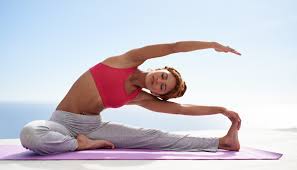When you think of exercise do you immediately consider aerobic exercise and strength training? Are you aware there are other components to your training which contribute to your overall health and well being?
Flexibility or mobility training is an important dimension you must incorporate into your training whether your a beginner or are more advanced. And there are many reasons why!
Your flexibility/ mobility decreases with the typical modern western lifestyle; with prolonged sitting and prolonged use of technology being major contributors to decreasing your mobility.
Sitting postures negatively impact your bio-mechanics and posture; resulting in a reduction of your mobility across multiple joints of your body.
Failing to address these mobility changes through targeted flexibility exercises will increase your risk of injury during both training and/ or activities of daily living within the real world.
Increasing your flexibility/ mobility has numerous benefits for your body.
Benefits of Flexibility
- Greater joint range of motion and freedom of movement
- Improved circulation
- Decreased risk of injury
- Reduced muscle tension and soreness
- Improved posture
- Improved movement efficiency
The result of these benefits is to increase the quality of your exercise and training; as well as to potentially enhance the quality of your life. Injury is an obstacle to your exercise and training; it is also detrimental to your health.
Have you ever had to ask for help or help a family member or friend when putting your arms through the sleeve of a jacket? Or have you ever struggled to simply get up and out of bed in the morning?
Alternatively, have you ever been unable to perform a strength training exercise due to poor range of movement?
A full squat or a deadlift for example. Has your poor flexibility held back your strength gains? Do you compensate in your movement patterns due to poor mobility and joint range?
The increased freedom of movement you will feel with improved flexibility will decrease some of the restrictions you may face in your training and/ or your day to day life.

How Can You Increase Flexibility?
-
Myofascial release
Myofascial release is a method of flexibility training that refers to the release of tension and tightness in fascia. Fascia is the connective tissue that surrounds muscle. It is suggested that you perform myofascial release for at least 5 minutes before exercise, using equipment such as:
- Foam rollers
- Spikey balls
- Lacrosse balls
- Tennis balls
Myofascial release techniques are effective when performed prior to exercise. These techniques assist to release trigger points within your muscles; improving your quality of movement and the overall quality of your training. Myotherapy treatment is another powerful strategy for releasing trigger points and improving your mobility.
-
Stretching
There are three main forms of stretching, known as dynamic, static and PNF stretching. Each form of stretching is effective to use in various situations.
Dynamic Stretching
Dynamic stretching requires you to move as you stretch. This helps you to warm your muscles and prepare for the upcoming exercise.
As you move your limbs and undergo stretching, your circulating blood will increase to meet the demands of the muscle.
This will increase muscle elasticity, allowing more power and force production by the muscle.
Dynamic stretching should be performed by holding the stretched position for just a few short seconds with each swing, bend or rotation of a limb.
Static Stretching:
This form of stretching is conducted whilst stationary. Research has shown that static, unlike dynamic, decreases power and force production, therefore is less effective when performed prior to exercise. Performing static stretching after exercise when your muscles are already warm allows you to stretch those muscles in their full range of motion. Performing these stretches regularly in their full range of motion will allow the body to adapt to a new level of flexibility. Static stretching is recommended to be held for approximately 15-30 seconds per stretch.
PNF Stretching
Proprioceptive neuromuscular facilitation (PNF for short) is the assistance of an object or another individual to provide resistance against your stretch.
When conducting static stretching in the past, you will likely have stopped the stretch at a point where you feel further stretching may cause pain, and this is the correct thing to do to avoid injury.
However, your muscles have much more give than you may realise. This is where PNF stretching with the assistance of a professional will help you to stretch the muscle beyond what you are capable of stretching it to in a static stretch.
Flexibility training has various benefits for each and every individual, and you should incorporate it into your lifestyle to take advantage of these benefits.
To ensure you are training safely and most optimally for your own goals, contact Inspire Fitness today on 9857 3007 and speak to one of our Exercise Physiologists or Personal Trainers for more information.
References:
